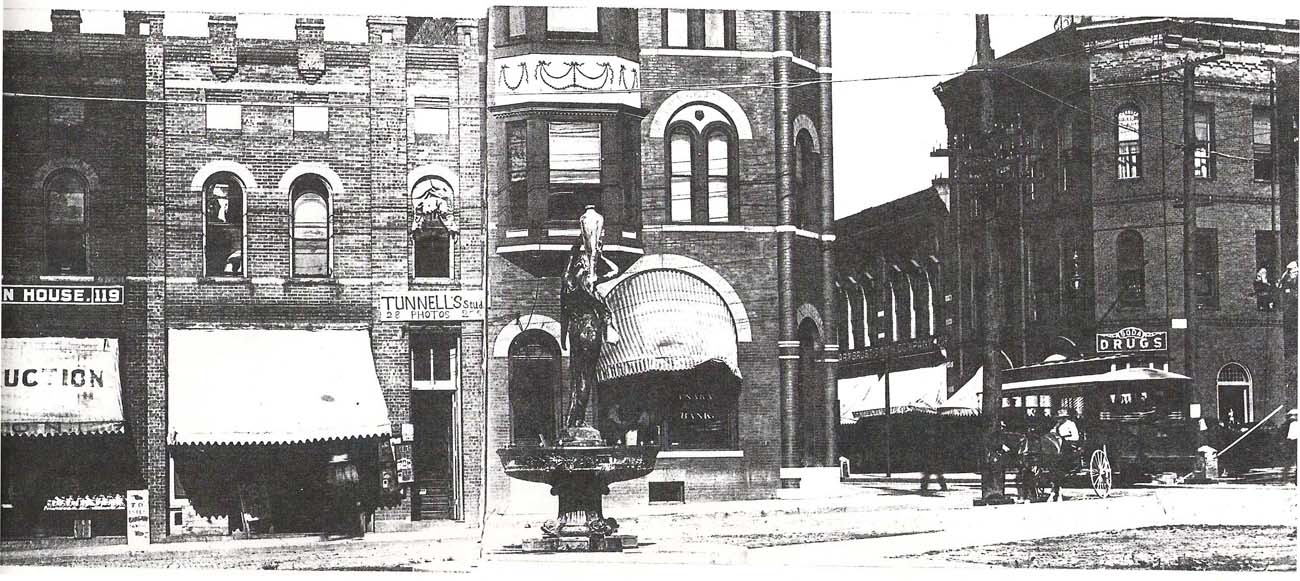Johnson City is the home of over 65,000 people and has been around s ince 1856. It has also been the home to many great changes and developments. You cannot truly app
ince 1856. It has also been the home to many great changes and developments. You cannot truly app
reciate the city you call home until you understand how it came to be. If the streets of Johnson City could talk, here is some of what they would say…
Johnson City was officially founded in 1856 by Henry Johnson. His home is still here in Johnson City as he is buried in the historic Oak Hill Cemetery in downtown.
Contrary to popular belief, this area of Tennessee and especially Johnson City, heavily favored the Union army during the Civil War. Also, the two sons of Henry Johnson were in the Union Army.
However, where Lamont Street sits now was an army training
base for the Virginia section of the Confederate army.
The very first school building in Johnson City was erected where Science Hill currently stands. This school’s first session started on August 24, 1868.
Milligan College was founded in Johnson City in 1867 and originally called “Buffalo Male and Female Institute” which is why Milligan students are known as Buffaloes or Buffs. They had their named changed to Milligan College in 1876.
Where the Tennessee National Bank stands now was once the site for Johnson City’s original public entertainment known as, Jobe’s Opera House.
LeRoy Reeves, a Johnson City resident, proposed the design of the current state flag of Tennessee. He was a young man who was very concerned that our great state had no representation. After he submitted his designs, the local news showed other variations of his design submitted by other people. However, April 17, 1905, Tennessee officially adopted Reeves’ design as our state flag. He is also currently buried in Oak Hill Cemetery with a Tennessee flag flying over his grave.
Everyone knows the famous “Lady of the Fountain” statue in downtown. She arrived in Johnson City around 1905 in honor of congressman, Walter Brown, for allowing the development of a home for disabled volunteer soldiers in our city. However, after some moving her about downtown as well as, her feet and fountain parts being removed, she ended up in a family garden in Hendersonville, North Carolina. Twenty-two years later, our lady returned to us, when in 1979, Charles Rose donated her back to Johnson City because of her historical significance.
East Tennessee Normal School (now East Tennessee State University, Go Bucs!) was opened on September 5, 1911. George L. Carter donated 120 acres of land to make the beautiful landscape of campus possible.
Johnson City’s first official media channels were the Johnson CIty Press in 1934, WJHL Radio in 1938, and WJHL TV in 1953.
There is so much history down every street in Johnson City and this is just a taste of it. If you want to learn more about the city we call home please visit Oak Hill Cemetery’s Decoration Day on June 18th or visit the Archives of Appalachia located on the fourth floor of the Charles C. Sherrod Library.
These facts about our city came from “History of Johnson City and Its Environs” by Samuel Cole Williams and “Remembering Johnson City” by Bob L. Cox. Both books are available at the Archives of Appalachia.
Check out Oak Hill Cemetery on Facebook, here: https://www.facebook.com/OakHillJC/
